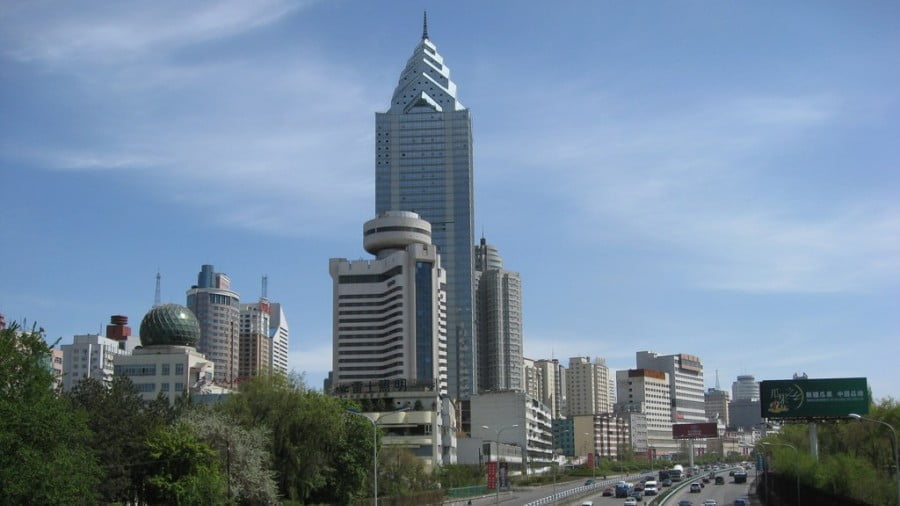China Should Work with Pakistan to Stop Disinformation about Xinjiang’s Uighur Population
China’s Muslim Uighur majority Xinjiang province has long been a target of manifold information wars designed to demonise China in the eyes of the wider Muslim world in which China has many successful partnerships and looks to make many more such partnerships in the context of the One Belt–One Road initiative. There are no prizes for guessing which rivals of China seek to benefit from the widespread sowing of disinformation of this kind. Last year one of China’s increasingly important Muslim majority state partners Turkey cracked down on fake news regarding Xinjiang as part of a longer term strategy to enhance a partnership with China that is increasingly pivotal to Turkey’s economic expansion and development.
It is Pakistan however that has been China’s closest all-weather friend not just in the wider Muslim world but in the world as a whole. As Pakistan’s long time Chinese partnership enters a new golden era of economic, security and cultural cooperation, Pakistan can play a key role in helping the wider world to understand that in modern Xinjiang, a patriotic Chinese identity and a regional Uighur identity of which Islamic traditions play a vital role are far from mutually exclusive.
On his radio programme Context Countdown, geopolitical expert Andrew Kroybko recently spoke of China’s shortcomings in terms of retaliating against the western sponsored infowar regarding the conditions in Xinjiang. It is in this area where Pakistan can come to China’s assistance in helping to tell the truth about China’s Muslims whose traditional region shares a frontier with Pakistan. Pakistani author and scholar S M Hali recently penned a highly instructive piece detailing how under the leadership of Xi Jinping, China has been able to tackle extremism in Xinjiang while helping to preserve the region’s cultural characteristics.
“In the past, China’s eastern provinces enjoyed greater opulence and a higher rate of development, perhaps because they are closer to the coastal region and ports. However, this disparity caused Xinjiang’s population to face a sense of deprivation, which was manipulated by China’s detractors, who tried to incite the Muslim population, ethnic Uighurs, into insurgency.
President Xi Jinping quelled the insurgency with a two pronged policy. Security forces cracked down on the troublemakers with an iron hand, while development projects with the inclusion of Uighurs ushered an era of prosperity. The Belt and Road Initiative (BRI) or the New Silk Road, which promises a new age of affluence, has Xinjiang as its focal point. The flagship BRI project, the China Pakistan Economic Corridor (CPEC) terminates at Xinjiang’s ancient city of Kashgar, which was a major city of the ancient Silk Road and has become BRI’s launching pad into Central Asia and beyond.
The steps taken by both the central government and the Xinjiang Uyghur Autonomous Region to dispel a sense of deprivation, promote conventions of religious beliefs and conduct an era of harmony is remarkable.
I have been visiting Xinjiang for the past four decades and am a witness to its various stages of development. From a sleepy backwater of the 1970s, Urumqi has become a sprawling metropolis, with high-rise buildings, busy roads, marketplaces and shopping malls. A network for underground Metro trains and high-speed railways is reaching the final stages of completion.
Currently I am touring Xinjiang as a guest of the BRI to delve deep into its core and feel the pulse of this massive project. A detailed tour of the Xinjiang Islamic Institute and discussions with AdudulrekepTumniaz, President of the Institute and deputy director of Xinjiang Islamic Association was very reassuring. The Institute is 28 years old and has came a long way. My previous visit was in 2011 and since then, a new campus with modern class rooms, an impressive mosque, well equipped library, cosy dormitories and state of the art sports facilities has been completed in 2017, which can compete with any modern western university.
The Chinese constitution ensures freedom of religion and Islam is no exception, however, western critics and detractors of China have been spreading rumours about the practice of Islam being curtailed. Since extremists have been distorting the tenets of Islam, quoting verses out of context and leading the faithful astray with their particular brand of religion to fulfil their heinous designs, the Islamic Institute has picked up the cudgel to produce scholars and religious teachers who can become Imams in various mosques and University Professors and teachers as well as research scholars to guide the faithful and protect them from extremism.
The Bachelor’s Degree being conferred upon the Islamic Scholars from the Institute — which numbers around 1200 per year — is spread over five years. Imbibed with the knowledge of Islam, equipped with the wherewithal to take up the responsibility of guiding others, these graduates have an open mind and are well versed in technology science, social studies and current international affairs to meet the challenge head on.
The scourge of extremism, which had hit Xinjiang in 2009 and later in 2014 is now diminishing because of the measures taken by the Central Government of China and the Xinjiang Uyghur Autonomous Region are bearing fruit. Security is tight; vigilance is efficient and more effective because the physical, financial and moral well-being of the citizens is being guarded. More opportunities for education, vocational training, employment opportunities and religious freedom are producing healthy students. Young boys and girls especially from the less developed and impoverished regions are being afforded the opportunity to study in state of the art boarding schools, where they are being provided quality education, mastery over arts, sciences, languages and extracurricular activities at state expense to complete high school and gain admission in inland institutions of higher learning.
Facilities for practicing religion are also being enhanced. Modern and well equipped mosques, slaughter houses where halal meat can be procured or the Eid-ul-Azha rituals practiced and support in pilgrimage are paying rich dividends. The government is ensuring that pilgrims for Hajj and Umrah are provided logistic support, while spiritual education and respect for the rights of the faithful is maintained. Medical facilities, which were redundant in Xinjiang once upon a time, have now been established to a level which is unprecedented. Traditional as well as conventional medicine is offered to the urban as well as rural dwellers with the additional advantage of telemedicine, on concessional or gratis basis.
With such a heavy investment, financially, spiritually and morally, there is no way the detractors of China can lead the faithful astray any longer”.
Hali’s piece should be as widely read as possible within the wider Islamic world. If it has not already been translated into Arabic, Turkish, Farsi and the Turkic languages of the central Asian republics, it ought to be as soon as possible. As Pakistan has long been committed to pursuing modern governance within the framework of deeply rooted Islamic traditions, Pakistani observers are able to provide keen insights into the realities of Xinjiang from the perspective of citizens of a proud Islamic Republic but crucially one that does not bear historic prejudices against Han Chinese people or the Chinese state.
Using this reality as a starting point, China can and should sponsor conferences and tours of the historic and culturally relevant sites in Xinjiang for both Pakistani officials as well as for ordinary Pakistanis who can use the power of social media to share stories with the wider world regarding life in Xinjiang. China’s security interests dictate that it would not only be unwise but dangerous to allow the uninhibited inflow of tourists into Xinjiang from unreliable nations. But as Pakistan remains China’s stalwart partner and as tourism between China and Pakistan is increasing in any case, there is no reason why Xinjiang’s cities cannot become a new hub of Sino-Pakistani interaction at a cultural and commercial level.
The increased prosperity in Xinjiang that has been detailed by Hali is all the more reason that increased human connectivity with Pakistan can and should take place throughout the Chinese province. While foreign regimes with clear geopolitical agendas continue to paint an inaccurate picture of Xinjiang based on hearsay, rumour, innuendo and outright lies, credible Pakistanis from all levels of society can follow in SM Hali’s footsteps and help the all-weather Sino-Pakistan partnership to counter ugly rumours on the win-win basis that continues to help both nations in their pursuit of development and peace through prosperity.







